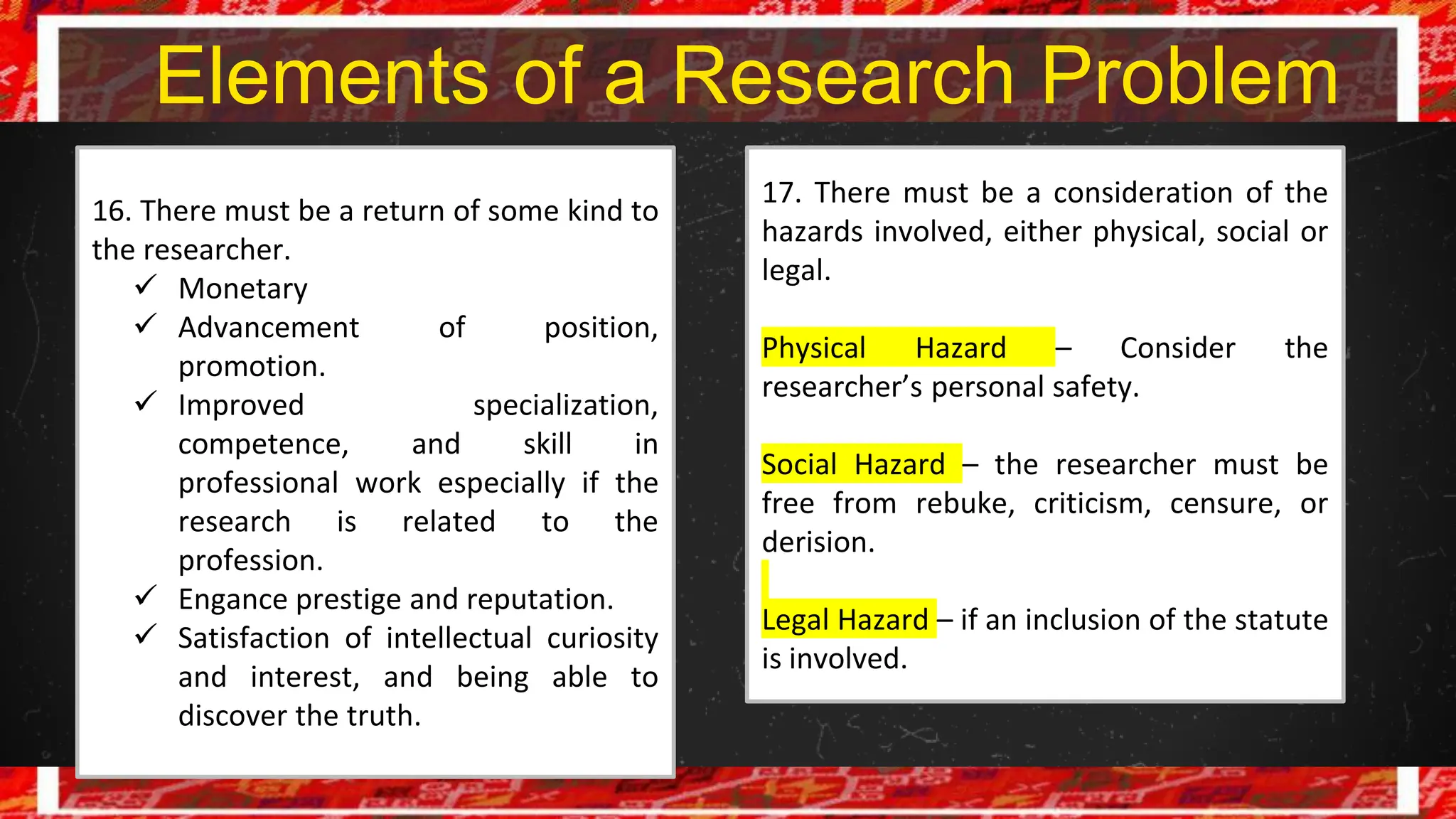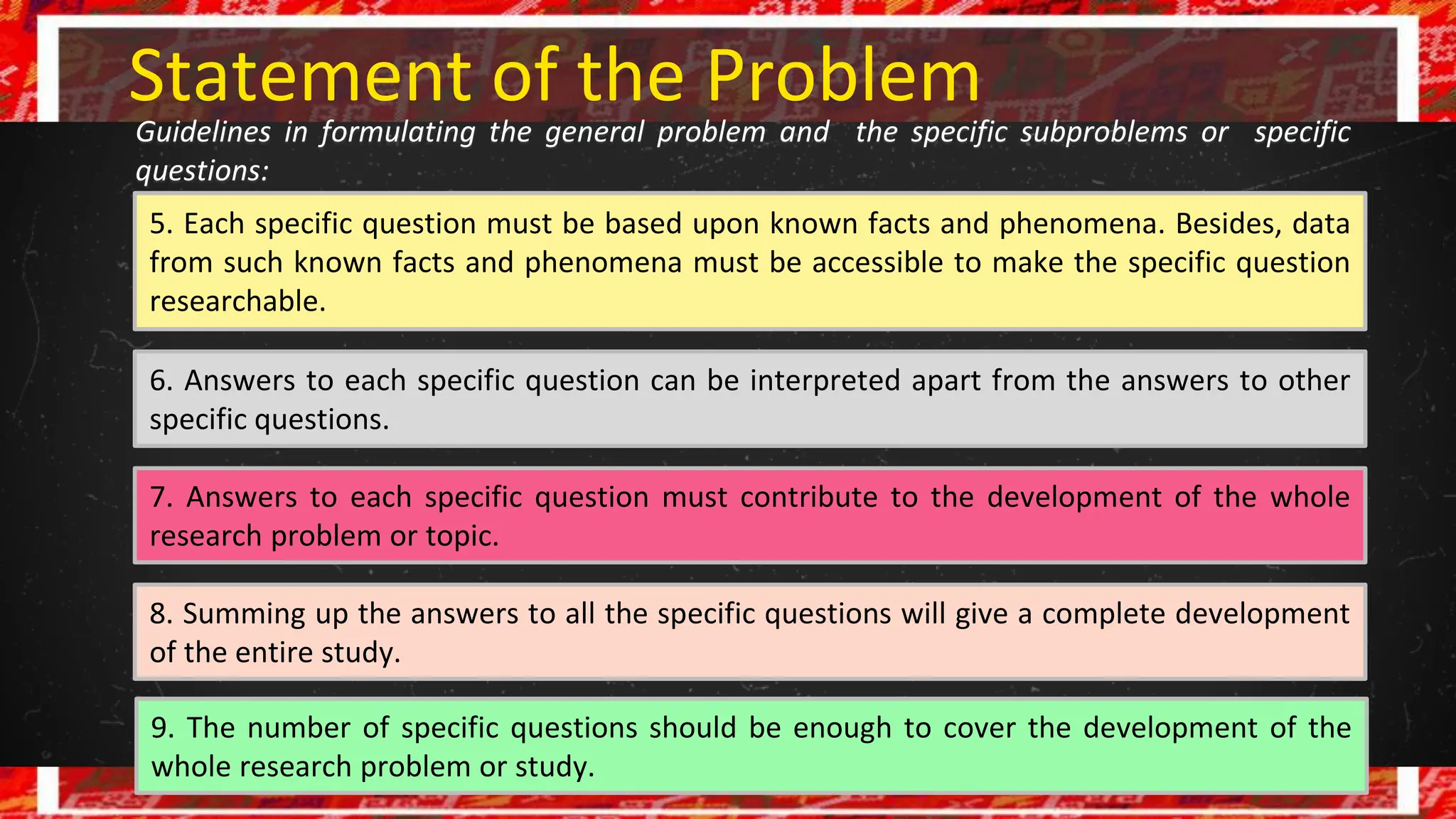The document outlines the essential elements of formulating a research problem in language teaching, emphasizing the significance of reflective thinking and the need for clear objectives, population, locale, and a manageable scope. It provides guidelines for writing research titles that are concise and informative while also detailing the formulation of specific research questions and hypotheses. Additionally, it discusses the qualifications and strategies of teachers, adequacy of facilities, and implications for improving science teaching.






























